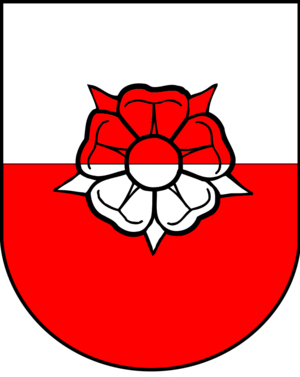Montalchez facts for kids
Quick facts for kids
Montalchez
|
||
|---|---|---|
|
||
| Country | Switzerland | |
| Canton | Neuchâtel | |
| District | Boudry | |
| Area | ||
| • Total | 6.41 km2 (2.47 sq mi) | |
| Elevation | 656 m (2,152 ft) | |
| Population
(December 2007)
|
||
| • Total | 213 | |
| • Density | 33.23/km2 (86.06/sq mi) | |
| Postal code |
2027
|
|
| Surrounded by | Fresens, Gorgier, Provence (VD), Saint-Aubin-Sauges | |
Montalchez was once a small town, or municipality, located in the canton of Neuchâtel in Switzerland. It was part of the Boudry district. On January 1, 2018, Montalchez joined with several other towns, including Bevaix, Saint-Aubin-Sauges, Gorgier, Vaumarcus, and Fresens, to form a new, larger municipality called La Grande-Béroche.
Contents
History of Montalchez
Montalchez is quite old! The first time it was ever written about was in the year 1340. Back then, it was known by a slightly different name: villa de Montallichie. This shows that people have lived in this area for a very long time.
Geography and Land Use
Montalchez covers an area of about 6.4 square kilometers (about 2.5 square miles). A big part of this land, nearly 58%, is used for farming. This means there are lots of fields and pastures.
About 37.5% of the land is covered by forests. This makes Montalchez a very green place with many trees. A small part, about 4.2%, has buildings and roads.
The town of Montalchez itself is located in the Boudry district. It includes the main village of Montalchez and a smaller settlement called Erperens, which is a hamlet.
What is the Montalchez Coat of Arms?
Every town in Switzerland has a special design called a coat of arms. It's like a symbol for the town. The coat of arms for Montalchez is described as Per fess Argent and Gules, a Rose counterchanged.
This means the shield is split into two halves. The top half is silver (Argent), and the bottom half is red (Gules). In the middle, there's a rose. The rose is colored opposite to the background it sits on. So, if it's on the silver part, it's red, and if it's on the red part, it's silver.
People of Montalchez (Demographics)
Montalchez had a population of 213 people in December 2007. Over the ten years from 2000 to 2010, the number of people living there grew by about 37.6%. Most of this growth happened because new people moved into the area.
Most people in Montalchez speak French as their main language. In 2000, about 97.3% of the people spoke French. A small number also spoke German or English.
In 2008, a little more than half the population (52.5%) were boys and men, and the rest (47.5%) were girls and women. Many people living in Montalchez were born there or in the same canton.
When we look at age groups (in 2000):
- Kids and teenagers (0–19 years old) made up 21.2% of the population.
- Adults (20–64 years old) made up 60.3%.
- Seniors (over 64 years old) made up 18.5%.
There were about 72 homes in Montalchez in 2000, with an average of 2.5 people living in each home.
The chart below shows how the population of Montalchez has changed over many years:

Economy and Jobs
In 2010, the unemployment rate in Montalchez was very low, at just 2%. This means most people who wanted a job had one.
Most jobs in Montalchez were in the primary economic sector. This sector includes jobs like farming and forestry. In 2008, there were 34 people working in this area.
Some people also worked in the tertiary sector. This sector includes jobs that provide services, like working in shops, restaurants, or offices. In 2008, 10 people worked in this sector.
Many people who lived in Montalchez traveled to other towns for work. In 2000, about 67.3% of working people used a private car to get to their jobs.
Religion
Based on information from 2000, about 69.6% of the people in Montalchez belonged to the Swiss Reformed Church. This is a type of Protestant church common in Switzerland. About 9.8% of the people were Roman Catholic. Some people belonged to other Christian churches, and about 10.87% did not belong to any church.
Education in Montalchez
In Switzerland, education is very important. In Montalchez, about 37.5% of the population had finished upper secondary education. This is like high school. About 7.6% had gone on to higher education, like university.
In the canton of Neuchâtel, where Montalchez is located, most towns offer two years of non-mandatory kindergarten. After that, there are five years of mandatory primary school. Then, students go to secondary school for four more years. Many students travel to larger schools in other towns for secondary education.
Montalchez shared its kindergarten and primary school with the nearby town of Fresens. In the 2010-2011 school year, there was one kindergarten class with 23 students and one primary class with 16 students for both towns combined.
See also
 In Spanish: Montalchez para niños
In Spanish: Montalchez para niños





